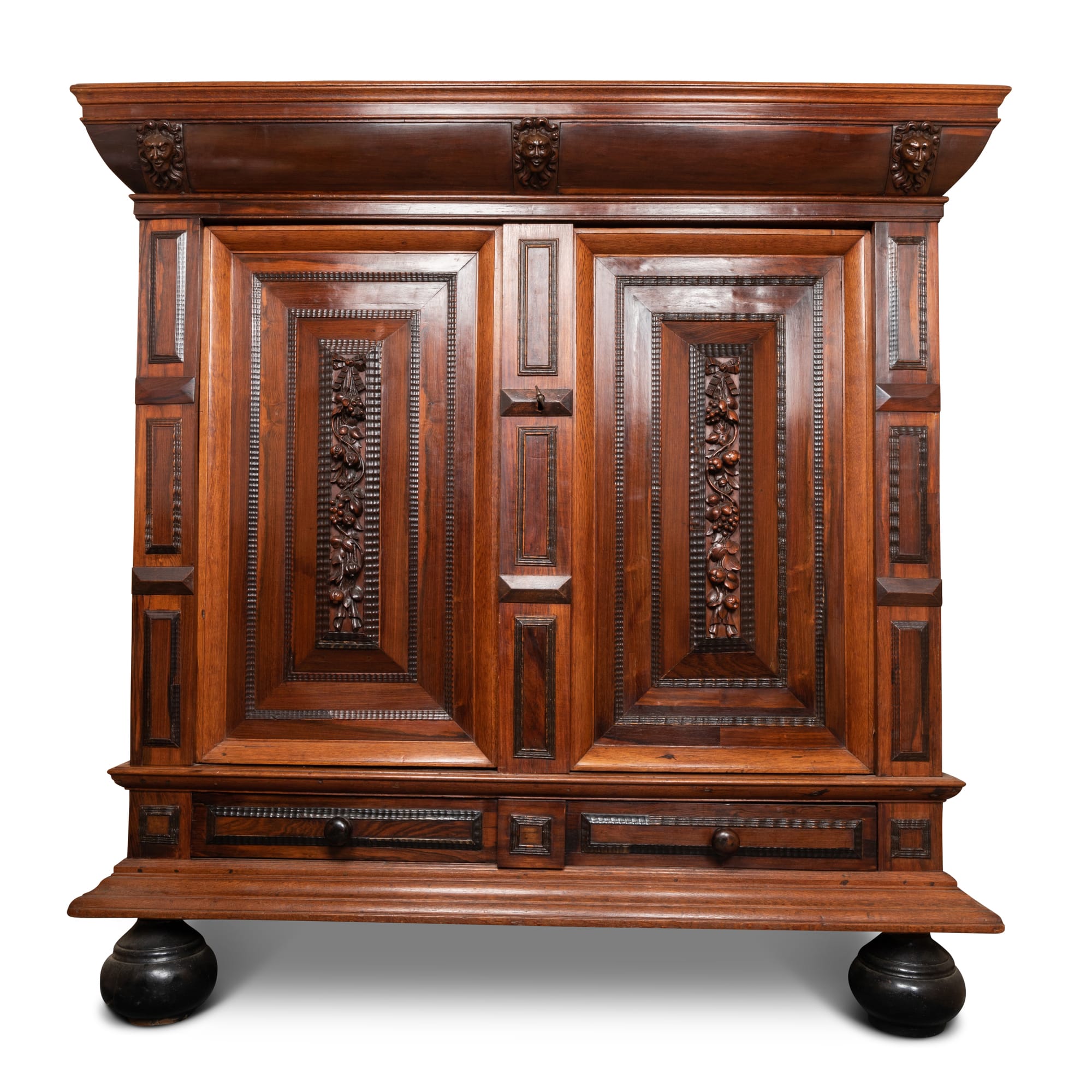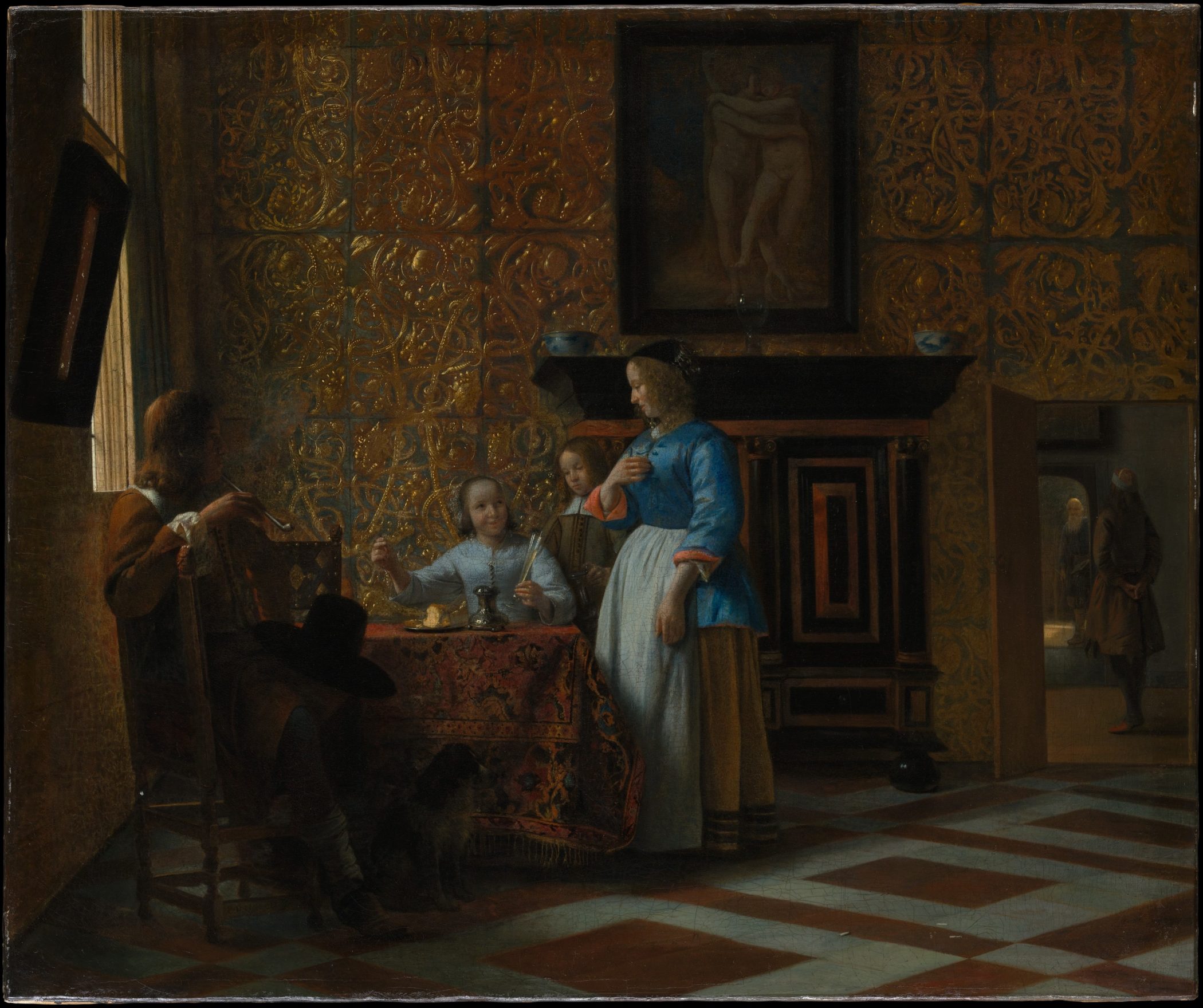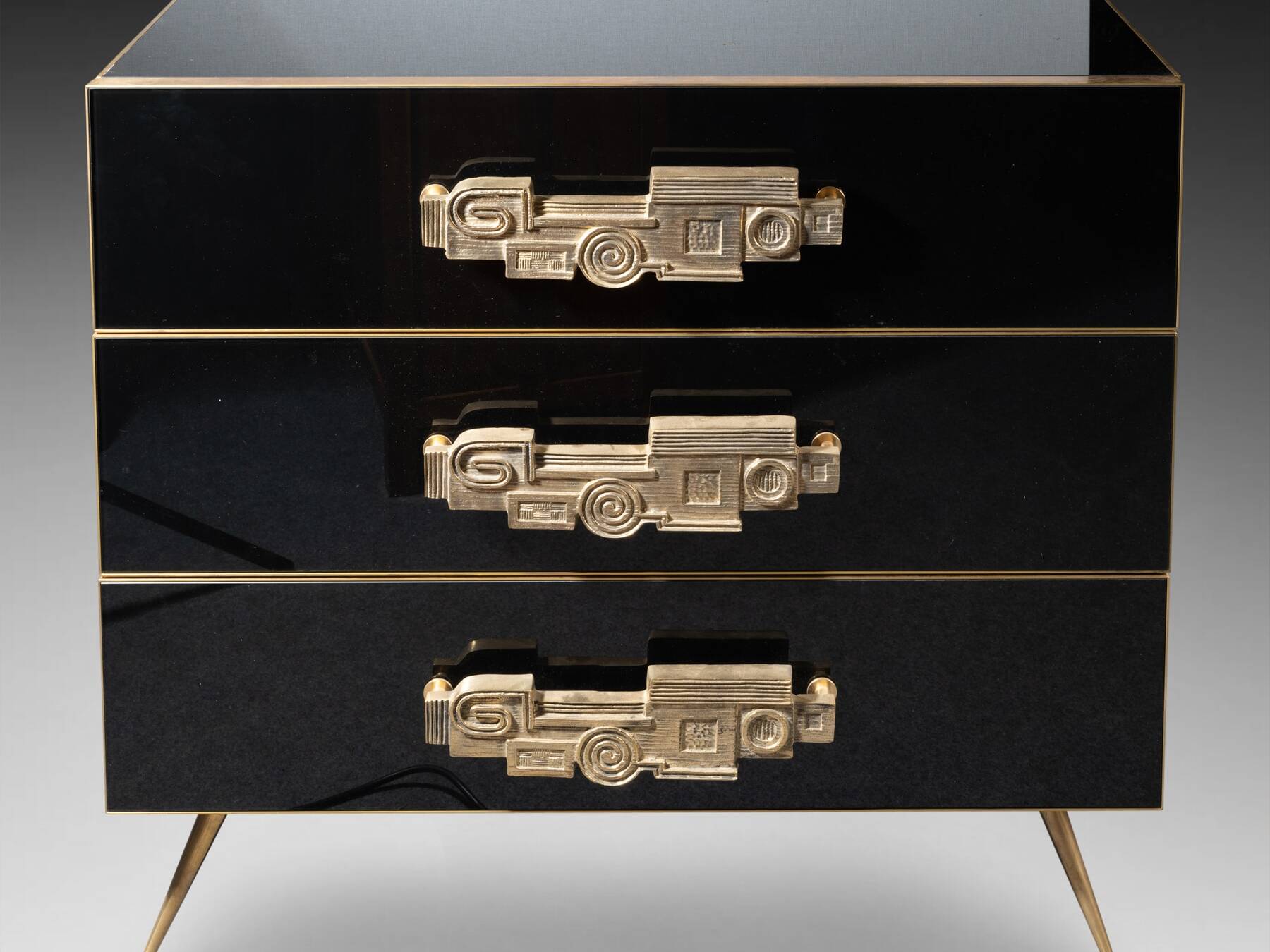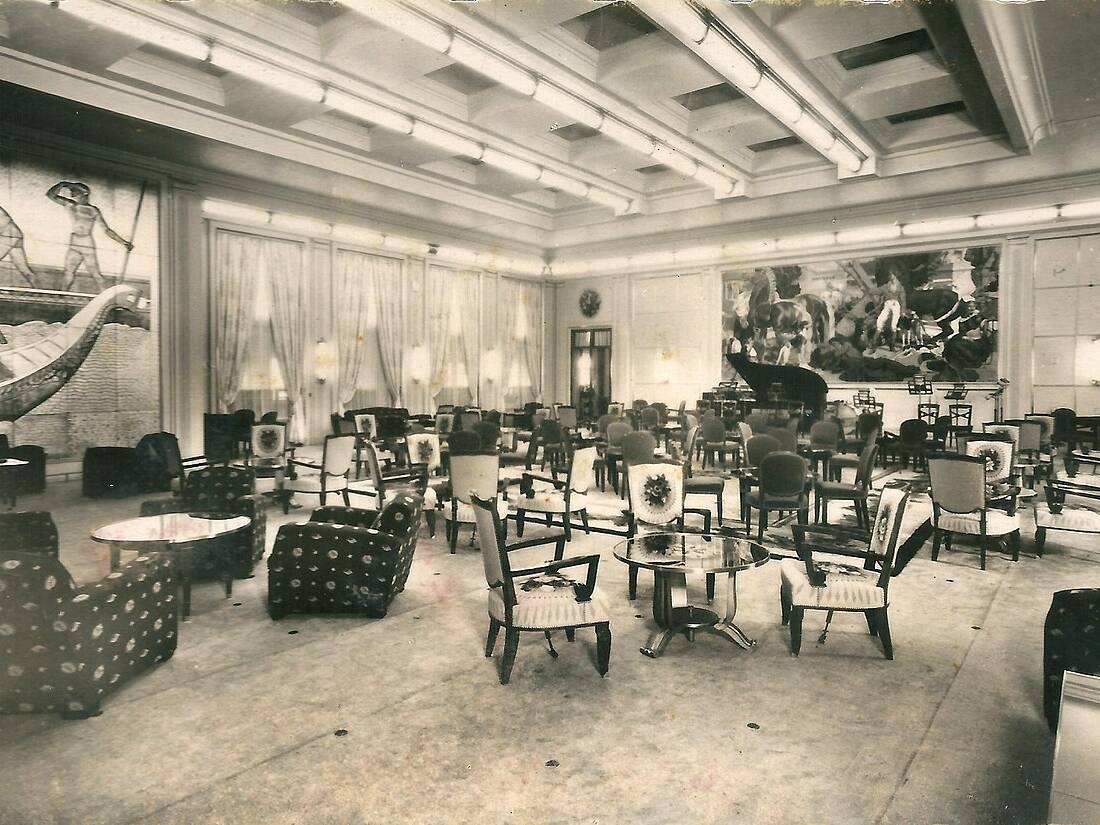Almost always as high as they are wide, these pieces of furniture are unique to Flanders, the Netherlands and northern Europe in general. Whether made of oak for the most common or enriched with precious materials for the richest, these sideboards take their name from the Dutch verb tidy. A variation on medieval ceremonial furniture, they were common in 17th-century bourgeois homes. This two-parts design is regularly embellished with two drawers or a frame separating two wide leaves. The cornice is more or less prominent and the feet are spherical and flattened.
An Opulent Renaissance
While the decorative vocabulary of this furniture does not directly reflect the geopolitical situation of this northern region in the 17th century, it is a sufficiently striking echo of it not to detect in this furniture a happy concordance of times.
It was in 1581 that the Dutch Republic was truly born, finally emancipated from the weighty tutelage of the Habsburg Empire. At the beginning of the 17th century, this newly independent territory entered a Golden Age, and with it, Amsterdam grew to become the richest city in the world thanks to maritime trade.
The Dutch East India Company, founded in 1602, developed a worldwide maritime network, establishing trading posts and commercial links with eastern countries, enabling goods to be transported and redistributed from the Dutch Republic to the many countries of Europe. The merchant bourgeoisie ran the economy, and the country’s prosperity was widely recognized. An essential reflection of this success, the acquisition of artworks, furniture and decorative objects became a preoccupation for merchants, enriched by this lucrative and flourishing trade that made their personal fortunes and those of the Republic. Artists and craftsmen were in great demand. This effervescence stimulated the arts, providing the ideal backdrop for the emergence of major talents such as the painter Rembrandt.

It’s not just the interiors of the bourgeois elite that benefit from this influence. The homes of the lower classes were also equipped with conveniences unheard of elsewhere in Europe at the time, as evidenced by after-death inventories.
Despite this appetite for innovation in all areas, the influence of Italian and French taste remains undiminished. The idea of beauty and prestige inevitably involves Renaissance motifs, which are still the major inspiration of this period.
The pattern books used by cabinetmakers, woodworkers and craftsmen are full of engravings that flesh out this style in a thousand variations, so that every client can find something to suit his or her taste. It was above all the opening up of trade to the world and the new opportunity to access materials rarer than oak that really changed the look of furniture.


Between the renaissance of a territory and the artistic renaissance, it’s hard not to make the connection – which may be a little easy – and notice the parallel in the ribbanks and the motifs that give them their rhythm. Yet both contribute to the formation of a unique identity that is always much sought-after by collectors.
Transitional Furniture
The ribbank is strong, massive and takes up a lot of space, just as medieval trunks and ceremonial furniture did before it. An essential part of any interior, it is displayed in reception rooms and counters. It’s customary to store fabrics or precious objects here. It has to be made of oak, in every region from Lille to Amsterdam, where this piece of furniture became a must-have in the 17th century.

The patterns, on the other hand, are more delicate and their profusion softens the imposing stature of the furniture. These are draped antique figures, round-faced putti, lion’s mouths, motifs like cornucopia pouring out flowers and fruit from the four corners of the world. Some of the figures are dressed in the fashions of the time, giving clues as to the owners’ professions. It’s a whole discourse that bears witness to an era of flourishing culture, habits and customs, and above all to the wealth for which the Dutch Republic is famous.
Luxury Materials
The most refined ribbanks often feature relief panels animating the doors and sometimes even the sides of the cabinet. These cabinetry choices literally highlight the luxurious inlaid materials. Tortoiseshell backgrounds, exotic and precious woods, ebony or blackened wood torsos are carried to the front of the cabinet to stand out from the oak background, which literally becomes a frame.

The emphasis is on the shimmering tawny reflections of tortoiseshell and precious woods, and the velvety depth of ebony. It’s also a way of valorizing the owner capable of acquiring these materials, and a way of making the furniture itself a cabinet of curiosities. In this region, where many nationals travel the globe and discover its wonders, ribbanks are a way to capture a little of these new horizons.
Moreover, dark interiors lit by northern light and candlelight were to come alive with the light and shadows that ran across and animated the surfaces.

A sumptuous emblem of a unique era, ribbank is a must-have for quality interiors. Just as it adapted to the materials and objects from the ends of the earth that inhabited or surrounded it in the 17th century, it is now surprisingly flexible enough to adapt to contemporary environments.
Marielle Brie
Art Historian for Art Market and Cultural Media
Author of the blog Objets d’Art et d’Histoire
Autres ressources et documentations
28 June 2025
Plaster Sculptures, Plaster Casts
For a long time, plaster casts suffered from a poor reputation. Often regarded as crude replicas, and sometimes even dismissed as inexpensive imitations, they nonetheless had…
17 April 2025
The Middle-Ages Furniture
Rare and highly sought-after, Middle-Ages furniture is making a strong comeback. An overview of this market, where enlisting the guidance of a professional is strongly advisable.
18 March 2025
Murano Glass Furniture
Since the beginning of the 20th century, Murano glassmakers have been exploring new horizons. After classic lighting and decorative art, Murano glass is now used to adorn…
16 December 2024
A bronze triton after the sculptures of François Girardon (1628 – 1715) in Versailles
This fountain element is all the more admirable as it is sculpted after the masterpieces of the Pyramid Basin, on the parterre of the North Wing of the Versailles gardens.
18 November 2024
Tyco Bookcase, by Manfredo Massironi, for Nikol International
A pure creation of optical art research in the 1960s, the Tyco library shelf designed by Manfredo Massironi invites the viewer to bring the work of art to life on a daily basis.
3 August 2024
The Ocean Liner Style
In the 20th century, the immense ocean liners connecting the Old Continent and the New World were ambassadors of tastes and innovations on both sides of the Atlantic.






